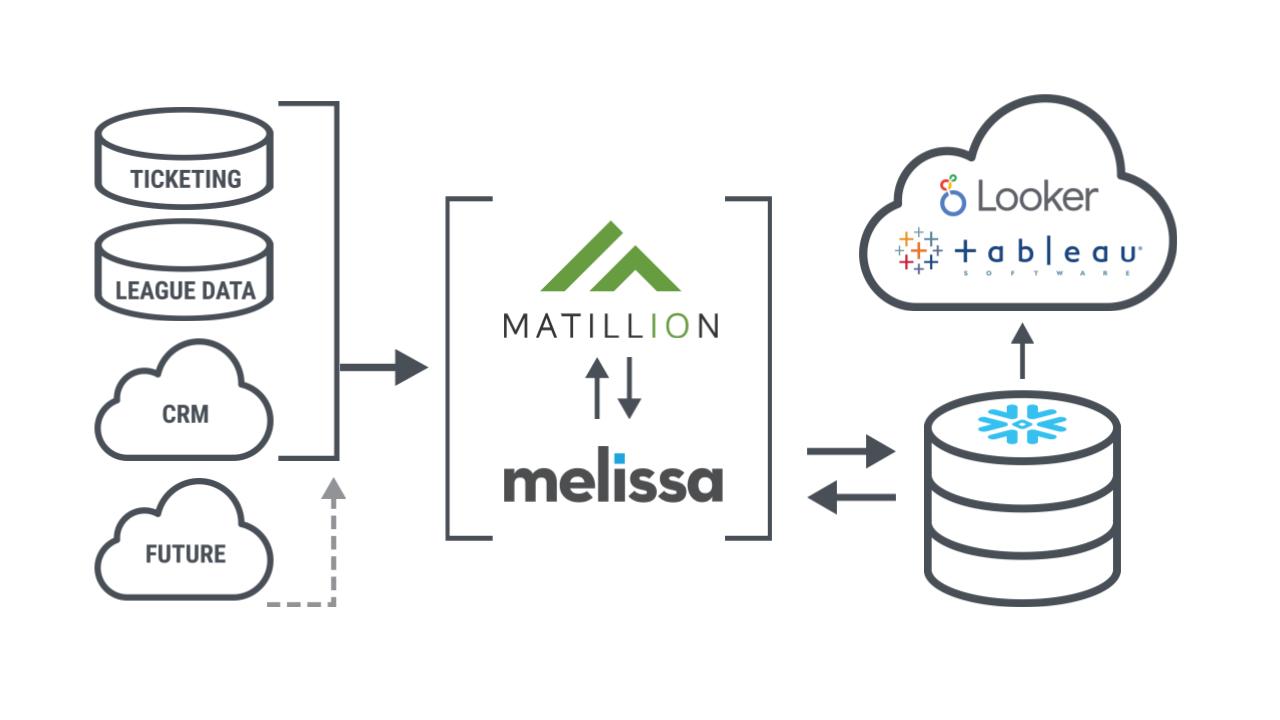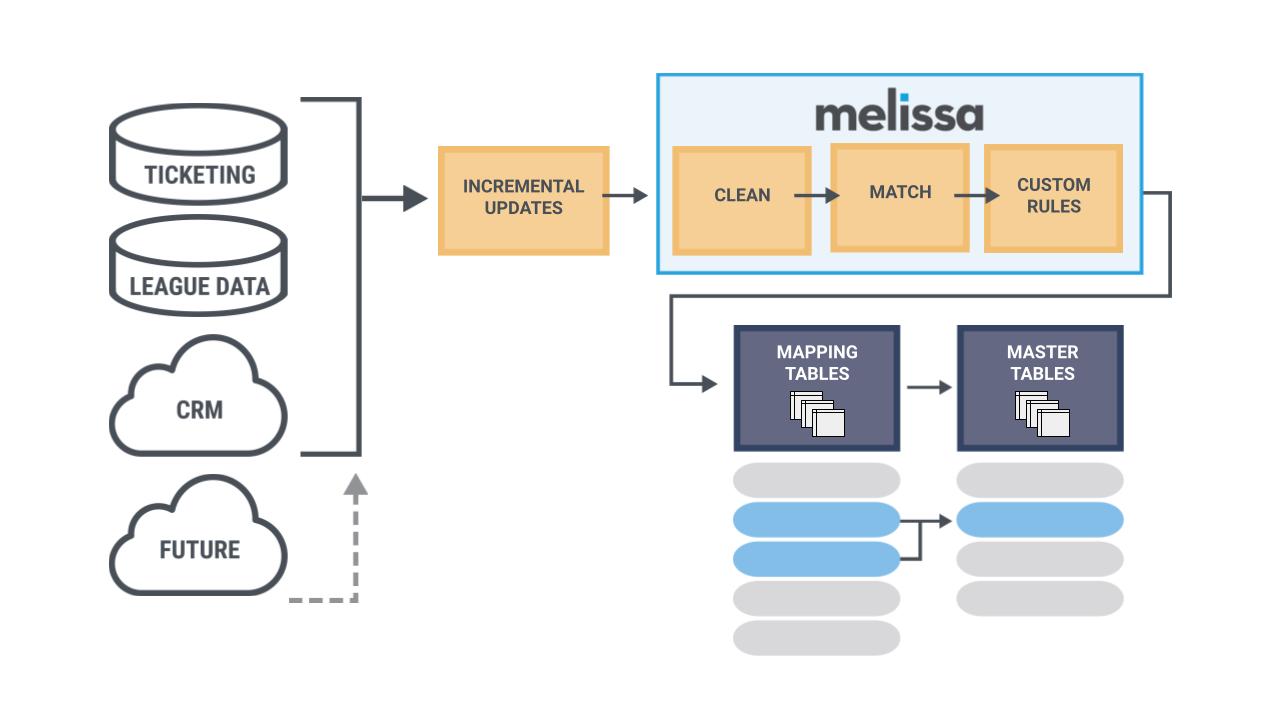Success Story

Learn how Data Clymer helped the San Francisco Giants accelerate time to insight by 50% and create a golden record for every fan.
Overview
Challenge
The Giants had swaths of fan data, but it was disorganized, inaccessible, and siloed across the organization. This made it extremely difficult to generate timely insights that could help the business.
Solution
The Giants teamed up with Data Clymer to implement Snowflake and a master data management solution that put timely, accurate insights into the hands of those who need them.
The Full Story
Behind the Giants’ Journey to Championship Business Analytics
For sports fans, the San Francisco Giants need no introduction. The team is one of the oldest franchises in baseball and boasts eight World Series Championships and 66 representatives in the MLB Hall of Fame. Off the field, Forbes Magazine ranks the Giants as the fifth most valuable team in the league at an estimated $3.7 billion.
But the team doesn’t limit its quest for excellence to the baseball diamond.
Like most sports and entertainment organizations, the Giants work just as hard off the field as they do on it. Their marketing and sales teams are always seeking new ways to drive fan engagement and increase ticket sales. Up-to-date insights are crucial to those efforts.
Striking Out with Data Siloes
The Giants had hordes of avid fans and swaths of fan data. The challenge was putting it all together to gain insight. Their existing data and analytics solution presented several challenges.
First and foremost, people who needed the data couldn’t access it. All the data was siloed and the company lacked a single, centralized source of truth. To make matters worse, the data was untrustworthy, containing duplicate records that yielded incomplete or incorrect information.
All of this slowed down reporting and made the team hesitant to even start analysis.
Unlocking a Fan Golden Record with Snowflake and Master Data Management
The Giants partnered with Data Clymer to clean up fan data, democratize it across their organization, and start to build a reliable, 360 view of their fans. Striving for democratized data for their sales and marketing teams, Data Clymer implemented a modern cloud data platform comprised of Snowflake, Matillion, Melissa Data, and Tableau.

Here’s a closer look at the tools Data Clymer selected and why.
Snowflake Cloud Data Platform
Snowflake is a world-class data cloud platform for leading sports teams and businesses, so it was a natural choice. In addition, Snowflake was uniquely suited as an enterprise data platform for the Giants for several reasons.
With native support of JSON files, the data team could store results from Melissa, their new master data management platform, as a variant data type directly in Snowflake. Then they could easily flatten the data into a structured format for further transformation processing.
Matillion
As a cloud-native ELT tool, Matillion was the product of choice to bring data from multiple siloed sources into Snowflake and transform it into an analytics-ready format. Matillion is designed to work with Snowflake, enabling the team to:
- Leverage the power of Snowflake to handle large volumes of data quickly and at scale
- Dedicate Snowflake compute power to Matillion jobs so the team can run Matillion jobs and analytical queries at the same time
- Create custom metadata-driven ELT applications by creating configuration tables in Snowflake. This allows the team to extract a new table from a source without touching the Matillion code; they just need to add a new entry into a configuration table.
Melissa Data
Melissa is a powerful Master Data Management (MDM) solution in conjunction with Matillion. Data Clymer has seen great results implementing it for the Las Vegas Raiders and many other sports teams.
The diagram below illustrates the MDM process.

Melissa enabled the teams to clean email addresses and mailing addresses leveraging access to the US Postal Service address database (among other libraries). The Giants could identify if an address is business or residential and attach a latitude and longitude.
Next, the data goes through another Melissa service that applies rules that start with a fan’s first and last name as an anchor, then match across email address, mailing address, and phone number against the entire fan database of millions of records. Melissa then returns a master key for all matches.
The result? A “mapping table” that contains all the original fan contact data and the master key, providing the ability to trace back from the master key to the raw keys. This mapping table data is then rolled up into the master contact, account, and person tables.
The Giants also track historical changes to the master tables to understand what changes may have occurred over time with the master keys. In alignment with data warehousing best practices, Data Clymer used a slowly changing dimension Type 2 design pattern. That means that any change to the data in a master row triggers the insertion of a new row and marks the old row as historical.
The Results: Faster Analytics, Pre-packaged Solutions, and Partner Growth
This new modern data and analytics stack has transformed how the Giants work with data. Silos are gone, and data now lives in a central location in the cloud where it is accessible to the departments that need it.
With all their data in a single location, analysis was much faster. Actually, 50% faster according to Rocky Koplik, vice president of analytics. Projects that were once impossible due to level of effort are now within reach for the Giants.
Duplicate records are also a thing of the past. With the MDM golden record, the Giants cleaned up their fan record base and drove a 15 percent reduction in volume.
“The partnership with Data Clymer was the single best decision that we at the Giants made in our efforts to quickly ramp up our analytic efforts.”
—Rocky Koplik, Vice President, Business Analytics
Within weeks of implementing the new Snowflake master data management solution, the Giants had a better understanding of their customers including deeper insight into:
- Ticketing: Usage, sales, and packaging efficiencies
- Stadium data: Total entrances, seat data, and concession sales
- Forecasting: Marketing, ticket pricing, and partner campaigns
- Ad-hoc game-day analytics: Up-to-date data to support custom queries
All of this insight has added up to a deeper understanding of customer behavior and the ability to use that information to target customers with the deals and packages they really want.
“We used to base (customer insight) on TDC account number, which overestimated new customers being attracted through offers,” said Rocky Koplik, Vice President of Analytics at the Giants organization. “Now, we can see when a new customer truly enters our database. We can better assess the types of offers that draw their interest and follow their customer path forward.”
Win Fans with Snowflake and Master Data Management
Many teams struggle to gain the insights they need truly understand their fans and drive engagement. A modern sports analytics solution can help.
Data Clymer is the #1 data analytics consultancy for professional sports teams. Our expert cloud data and analytics engineers can make the transition to a modern data stack smooth and easy. We act as an extension of your data team, filling resource gaps and implementing the best data technologies.
Explore our collection on data analytics in sports, or contact us today for a free strategy consultation.










